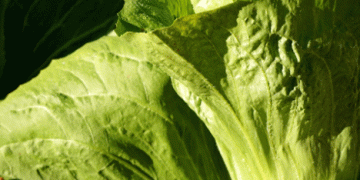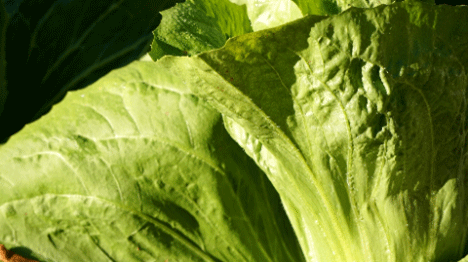Zuckerhut lettuce, with its crisp, elongated yellow-green leaves, provides a refreshing and nutritious option during the cooler months in Switzerland. Despite its name, Zuckerhut (meaning “sugarloaf”) is not sweet but has a slightly nutty and bitter taste, thanks to the natural bitter compounds found in its milky sap. The name derives from its characteristic conical shape, resembling a traditional sugarloaf.
In 2023, Swiss vegetable farmers cultivated Zuckerhut on 115 hectares, with 39 hectares dedicated to organic farming. The total harvest amounted to 3,500 tons, of which 1,650 tons were imported to meet local demand. The growing popularity of Zuckerhut is largely due to its adaptability to various soil and climatic conditions, making it an ideal crop for Swiss farmers facing seasonal transitions.
One of Zuckerhut’s key advantages is its ability to withstand light frost, a valuable trait for crops grown in Switzerland’s colder months. Zuckerhut, a member of the chicory family along with endive and chicory, is typically sown between May and July. Harvesting occurs from September to November, making it a perfect autumn crop. Additionally, Zuckerhut can be stored for several weeks without losing its freshness, a significant benefit for both farmers and consumers during the off-season. While most lettuce varieties perish quickly in cold conditions, Zuckerhut’s durability ensures its availability from June through February, providing a fresh option even in winter.
Zuckerhut’s ability to thrive in low temperatures and its relatively low soil and climate demands make it a resilient crop for Swiss farmers. Its growing season, extending well into winter, offers a reliable option for extending production into the cooler months. Swiss consumers, who prioritize fresh, local produce, also benefit from the extended availability of this hearty salad vegetable.
The versatility of Zuckerhut in culinary use is also notable. With its bitter flavor profile, it is often used in salads, paired with sweet or tangy dressings to balance the bitterness. Its texture holds up well in heartier winter salads, offering a nutritious, fresh option when other leafy greens are in short supply.
Zuckerhut lettuce stands out as a resilient and adaptable crop, well-suited to the climatic conditions of Switzerland. Its ability to endure frost, extended storage potential, and growing popularity among consumers makes it an excellent option for Swiss farmers looking to diversify their crop offerings during colder months. As demand for locally grown, fresh produce continues to rise, Zuckerhut’s presence on Swiss tables is likely to expand, ensuring freshness even through the winter.































